What Does a Honey Bee Look Like?
One of the most popular insects around – almost anyone can answer the question: What does a honey bee look like? Yet, when these industrious insects are flying around it is not always easy to identify a honey bee – on the wing. Yet, to help us avoid trouble and stay safe around insects with the ability to sting – we need to know the basic features.

You may see other insects in the garden that at first glance look very “beeish”. However, these may be wasps and there are some major differences between bees and wasps.
How to Recognize a Bee
While we can picture in our mind what a honey bee looks like, identifying one in the wild is not always easy. Is it a bee, wasp, hornet or something else.
Seeing a potentially stinging insect can be a time of excitement for anyone. If you suffer from a severe fear of bees, your heart may even beat a bit faster.
Learning how to identify bees on sight can be an empowering feeling. It helps you know whether to stay and watch or back farther away.
Let’s explore some of the defining features of honey bees that can help you recognize a bee in a snap.
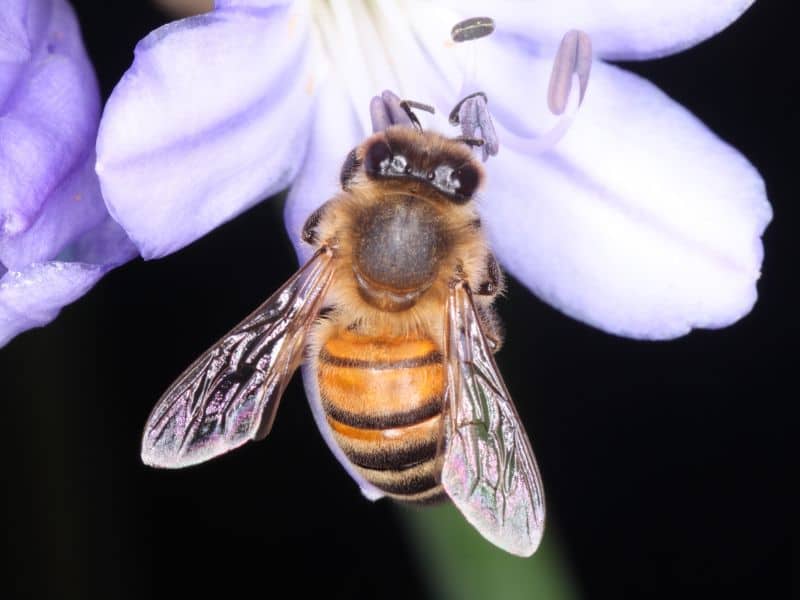
Honey Bee Identification Factors
Honey bees are insects. They belong to the scientific genus “Apis”. A quick review of honey bee anatomy reveals 3 major body sections: head, thorax, and abdomen.
They also have 6 legs and 4 wings and a pair of sensory bee antenna.
Honey bees have 5 eyes consisting of 2 large eyes and 3 small ones. The large eyes are used for sight and the smaller honey bee eyes are light indicators.
Honey Bees differ visually from other insects in several ways:
- appearance
- size
- color
Appearance
There are several species of honey bees in the world and different races or types of honey bees within each species. In the field, all honey bees look alike to the casual observer.
The body and even the eyes of honey bees are covered with short hairs. While not as fuzzy as their Bumble Bee cousins, they are fuzzy. This is a good advantage when bees are used for pollination.
They have other specialized body parts that help them perform their tasks. Worker bees have pollen baskets on their rear legs- used to carry balls of pollen back to the hive.
Two pair of wings (4 wings) help the honey bee travel long distances to gather food. They also are used to help control temperatures inside the hive.
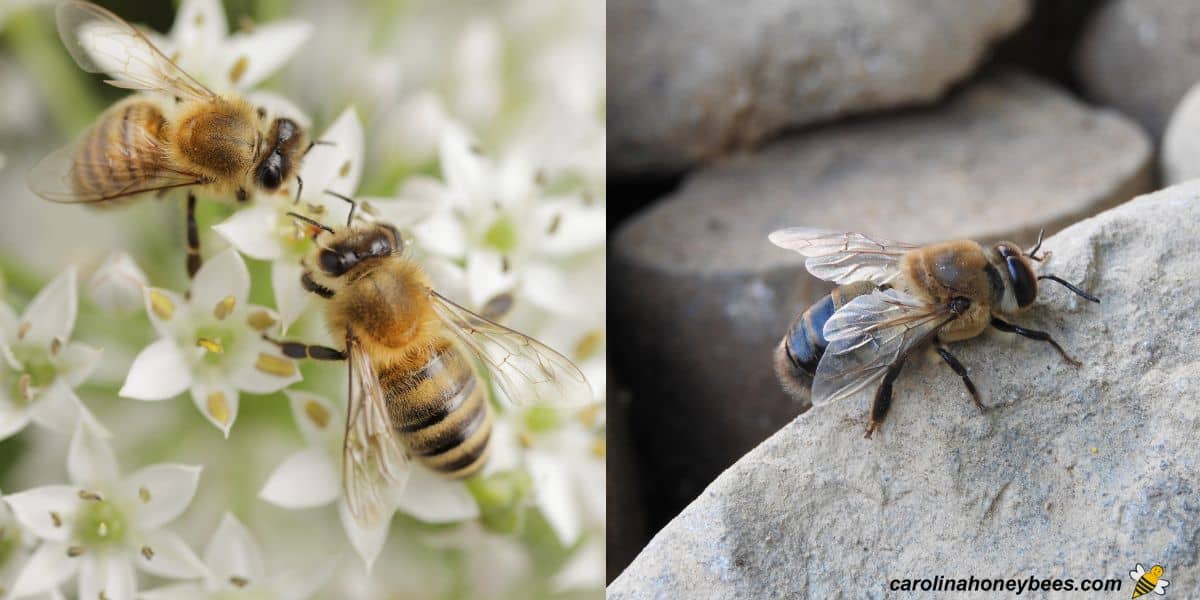
Size of Honey Bees
How big do honey bees get? Well, it depends to a large degree on the sex of the bee. The queen bee is the largest size bee in the colony. She can reach a size of 20-25mm.
However, it is rare to see a queen outside the hive. Those bees you see visiting flowers – that is not the queen bee.
Drones or male bees are slightly bigger than workers reaching a size of – 18-20 centimeters. You may see them away from the hive but they do not gather pollen or nectar.
Female worker bees average between 9 and 15 mm in length. Most of the members of a colony are workers and these are the ones we see outside. It is not unusual for colonies to have thousands of workers serving as foraging bees.
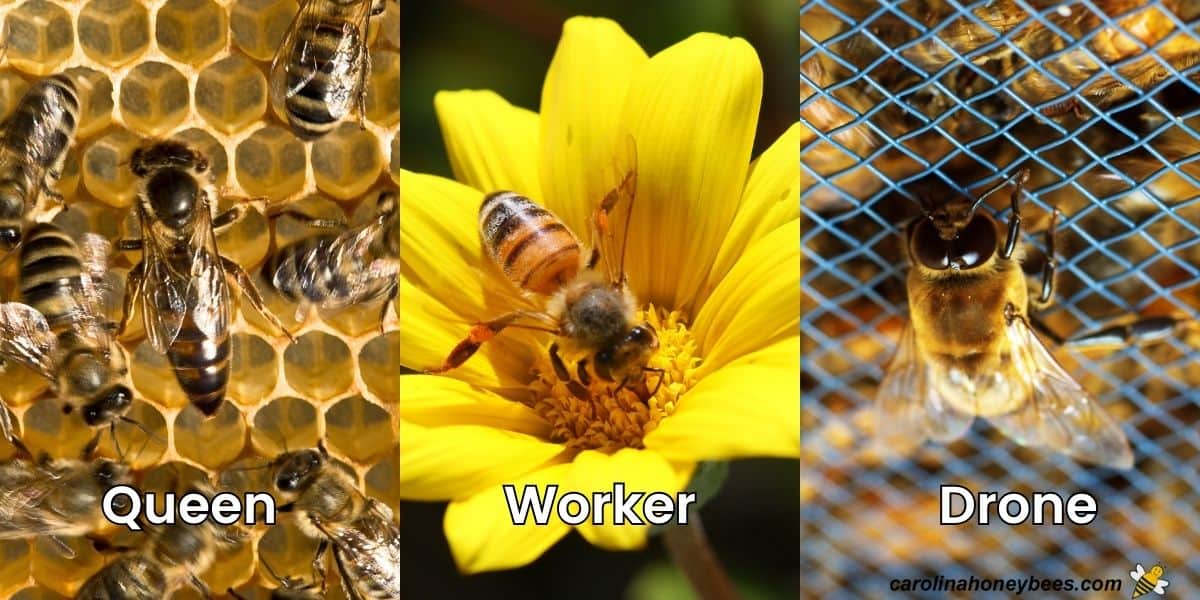
Color of Honey Bee
In art, we draw bee pictures using a lot of yellow and black. Actually, the color of honey bees varies – they come in various shades of black, brown, and yellow. Some have noticeable stripes on their abdomen but some do not.
The only noticeable difference would be light or dark coloring and the vibrancy of stripes. Not native to the United States, some of the first bees brought over from Europe were very dark or black bees.
What do Young Honey Bees Look Like?
Developing bees go through several stages, during the larval stage – bee larvae look like white grubs. When baby bees complete their development, they emerge from the cell fully grown.
Eventually young honey bees look pretty much like any other adult in the hive. During the first few hours after emergence, we call them a “callow bee”. They may have a greyish appearance for a short while.
Once their exoskeleton and wings dry, they will look very much like other members of the colony. The only noticeable difference in younger bees is that the thorax often has more hair than that of older members of the colony.
Is This a Honey Bee?
When you see bees close by – use these tips to help determine if it is a honey bee. Honey bees don’t mind if you quietly observe them as long as you are not near a beehive or nest.
Key Identification Factors for Bees
- has 6 legs and 4 wings
- is covered in fine hair
- barrel shaped body – no wasp waist-but defined segments
- is the insect carrying pollen?
- what are the bees doing?
- are you near a nest?

First, does the insect pass the basic anatomy of bees? It has 6 legs and 4 wings.
What about body shape? Honey bees have a blocky body and lack the thin “wasp waist” seen in insects such as paper wasps. Yet, you can still identify 3 sections.
Honey Bees and Bumble Bees collect pollen for rearing young. Seeing an insect carrying colorful balls of pollen on their hind legs suggests that this is indeed a bee and not a wasp.
What are the insects doing? Both wasps and bees will partake of sweet plant nectar. However, bees are more likely to spend a longer time moving from flower to flower.
Are you near a nest? Bee nests and wasp nests are very different. Honey Bees nest in cavities and not normally in the ground.
Identifying a Swarm
If you see a large number of insects visiting nectar rich flowers, this could be one of many different types of insects.
However, if those insects are hanging together in a clump – you have likely found a honey bee swarm. In most cases, this is just temporary and they will leave in the next day or so to start a new hive.
If they hang around for several days, check with a local beekeeping association. A beekeeper will likely be glad to come and collect them.
Swarms are generally not dangerous but do not allow kids or pets to harass them. Even honey bees will sting in defense.
Pictures of Insects Similar to Honey Bees
The most common insects often confused with honey bees are Bumble Bees, Carpenter Bees and Yellow Jacket Wasps. Their vivid markings are often confused for honey bee stripes.
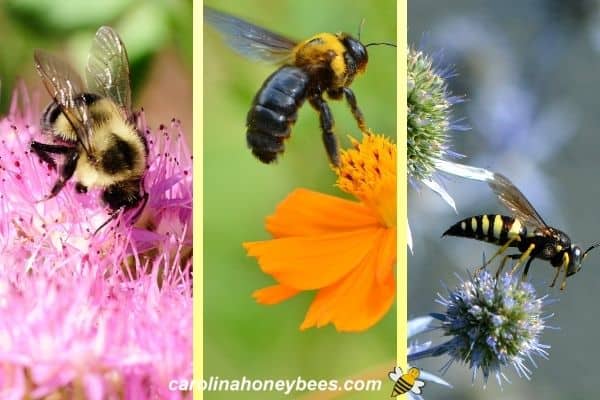
However, there are other insects that look so much like honey bees that they may be mistakenly mis-identified even by beekeepers.
- hover flies
- hummingbird moths
- mason bees
- cicada killer wasp
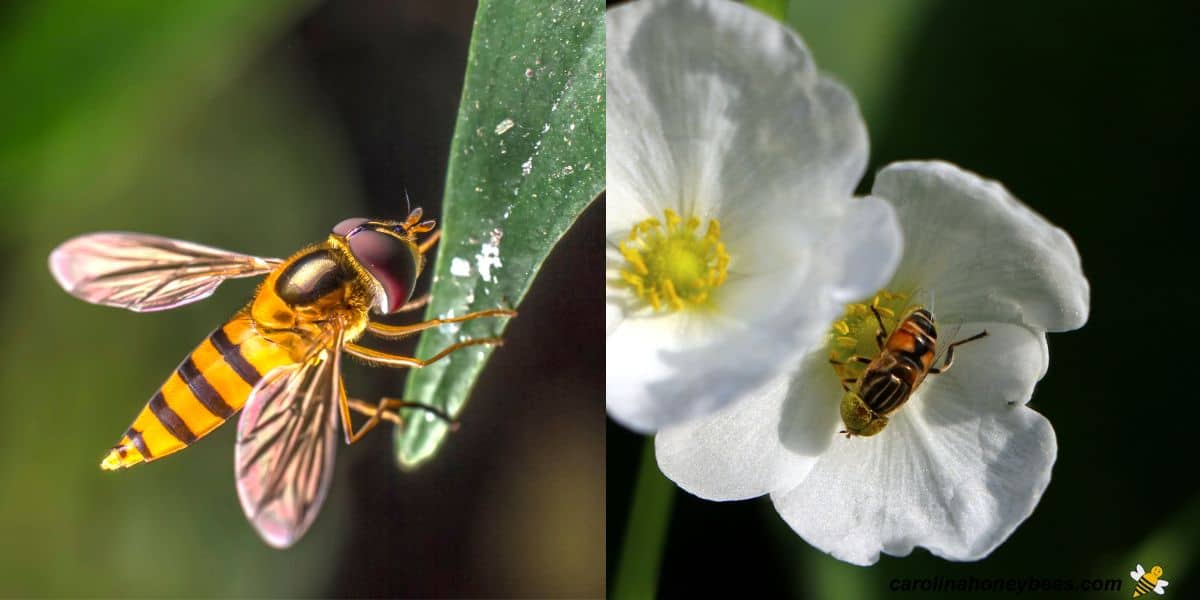
Hover flies are easily mistaken for bees. With their body shape, fuzzy covering and markings, they are much like a bee. However, they only have 2 wings instead of 4 wings that we find on the honey bee.
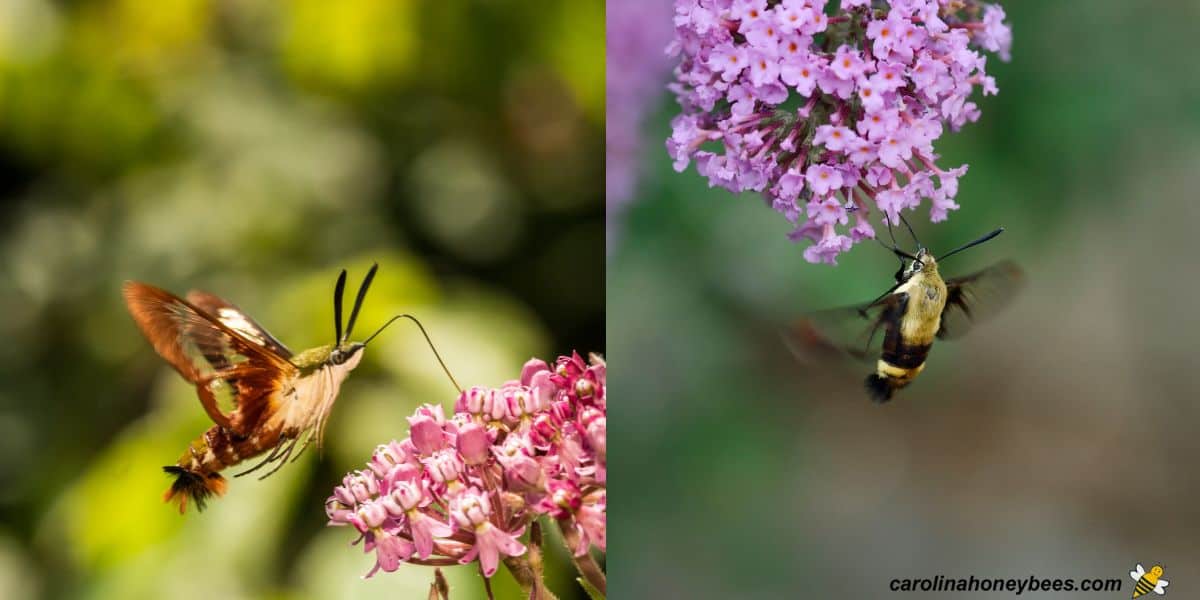
A bit large to be confused with a honey bee, the hummingbird moth makes quite a display in the garden. They are often thought to be some type of bumble bee.
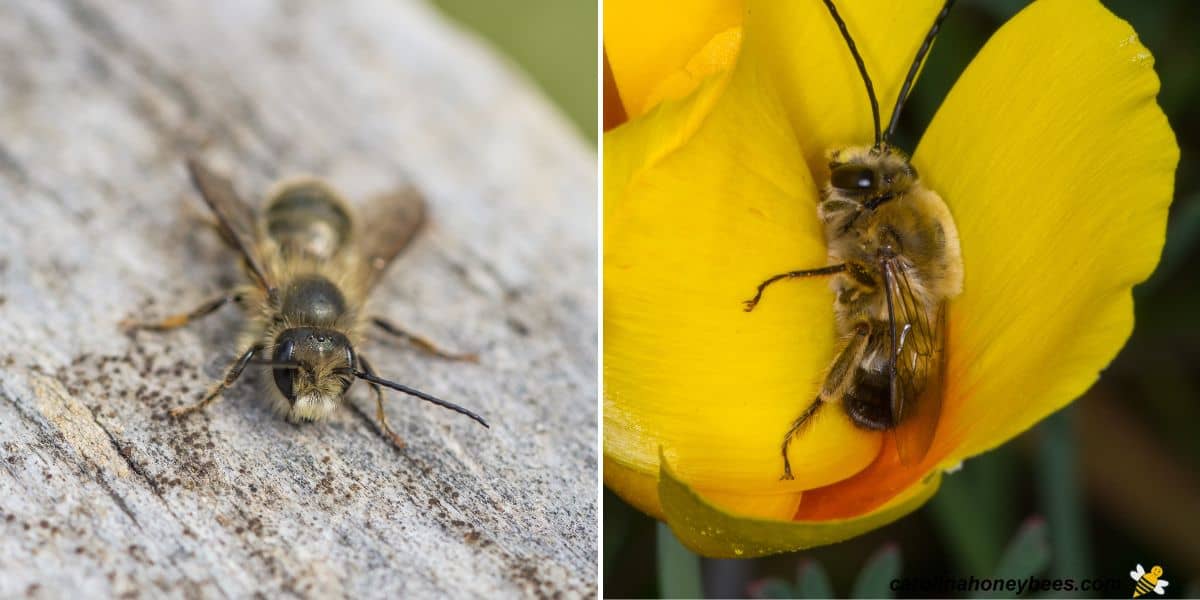
There are several varieties of Mason Bees – similar to honey bees. Some look more like common house flies while others closely resemble our honey bee.
Mason Bees do not live in large families, they are solitary insects. The easiest way to identify them is by the metallic sheen than many have on their body.
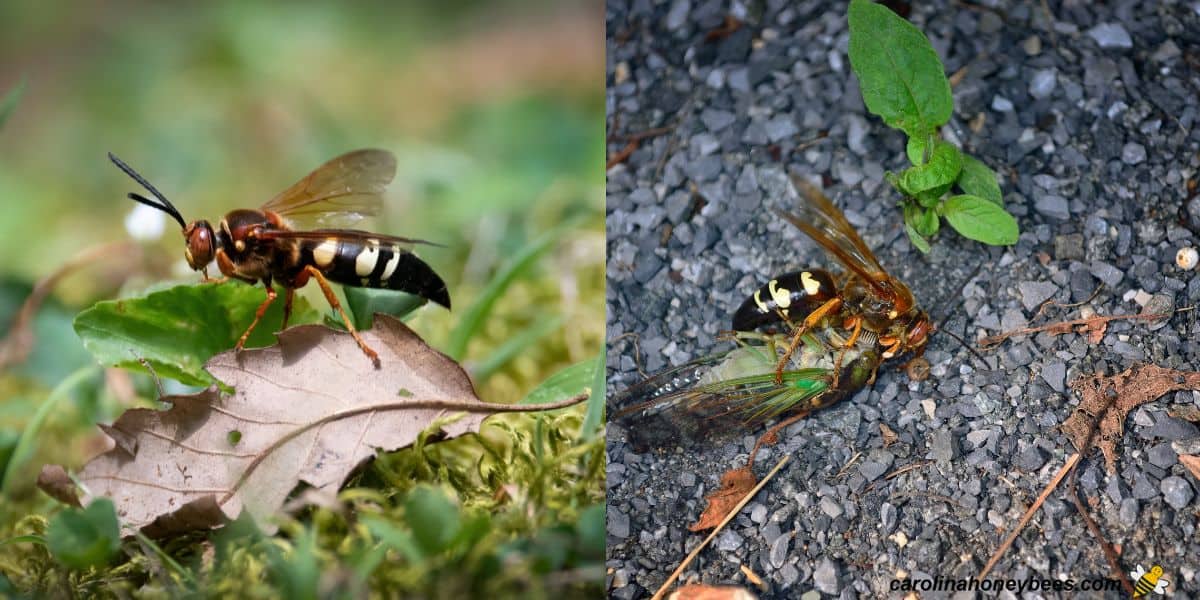
The Cicada Killer Wasp has the bright black and yellow coloring of many bees. They prey on Cicadas and are not aggressive to humans. Left alone, they rarely sting.
FAQs
Yes, honey bees are fuzzy. Their body and even their eyes are covered in small fine hairs. Younger bees have more fuzz that older members of the colony.
A killer bee looks like any other honey bee. In spite of a slight variation in size, they are indistinguishable in the field.
True identification of killer bees, or Africanized Bees takes place in the lab with precise measurements.
Honey bees vary in size. Generally workers measure around 0.5 to 0.6 inches in length. Drones are slightly larger ranging from 0.6 to 0.7 inches. The queen bee is the largest, often reaching lengths of 0.7 to 0.8 inches.
Final Thoughts
Learning what honey bees look like and being able to identify honey bees and other insects is a very important life skill. Bees have had a connection with mankind for a long time. In some cases, beekeepers follow the tradition of telling the bees about major life events. But, enjoy them from a safe distance.

